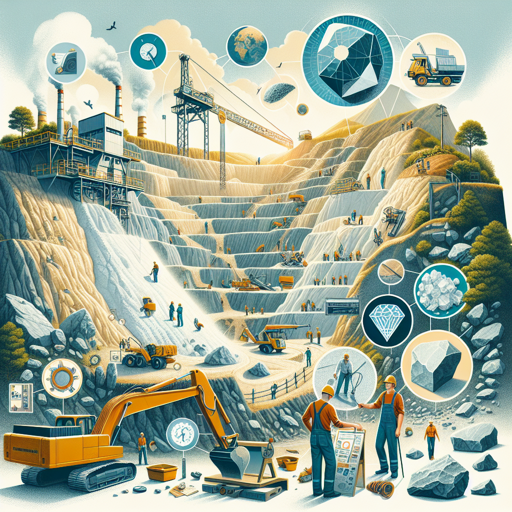Demystifying Limestone Quarrying Techniques
Unearth the secrets of limestone mining: methods, machinery, and their environmental impacts.

Introduction
Beneath the Earth’s surface lies a hidden treasure trove of natural resources. One such resource is limestone, a sedimentary rock used in various industries, including construction and agriculture. The extraction of this valuable mineral is a fascinating process, one that combines geology, engineering, and environmental science. This article will take you on a journey through the intriguing world of limestone quarrying, exploring the techniques used and their impacts on our planet.
Main Sections
Limestone Quarrying Techniques
Limestone quarrying primarily involves two methods: open-pit mining and drilling.
-
Open-Pit Mining: This technique involves the removal of surface vegetation, topsoil, and layers of rock known as overburden to reach the limestone deposits. The process can be quite invasive, significantly altering the landscape.
-
Drilling: This method involves drilling vertical holes into the ground to reach the limestone deposits. The drilled holes are filled with explosives, and the ensuing blast fractures the rock, making it easier to extract.
Environmental Impacts
Limestone quarrying, while economically beneficial, can have significant environmental impacts.
-
Habitat Disruption: The removal of surface vegetation and topsoil can lead to the loss of habitat for various species, potentially leading to a decrease in biodiversity.
-
Air Pollution: The drilling and blasting processes can lead to the release of dust particles and harmful gases into the atmosphere, contributing to air pollution.
-
Water Pollution: Quarrying activities can lead to water pollution if proper measures are not taken to prevent the seepage of waste materials into nearby water bodies.
-
Noise Pollution: The use of heavy machinery and explosives in limestone quarrying can generate excessive noise, impacting local communities and wildlife.
“The Earth is what we all have in common.” - Wendell Berry
Mitigating Environmental Impacts
Given the environmental implications of limestone quarrying, it’s essential to put in place robust strategies to mitigate these impacts. These include:
- Restoration of quarried areas to their natural state after extraction.
- Use of dust suppression techniques to reduce air pollution.
- Implementation of noise control measures to minimize noise pollution.
- Regular monitoring and management of quarry drainage to prevent water pollution.
| Technique | Environmental Impact | Mitigation Strategy |
|---|---|---|
| Open-Pit Mining | Habitat Disruption | Restoration of quarried areas |
| Drilling | Air and Noise Pollution | Dust suppression and noise control measures |
| Both | Water Pollution | Regular monitoring and management of quarry drainage |
Learn more about environmental management in the mining industry
Conclusion
Limestone quarrying is a complex process that involves a delicate balance between economic gain and environmental stewardship. As we delve deeper into the Earth’s crust to unearth these invaluable resources, it’s crucial that we do so responsibly, ensuring the preservation of our natural environment. Indeed, the future of limestone quarrying, and mining as a whole, lies in our ability to harmoniously blend our quest for development with our responsibility to protect and sustain our planet.